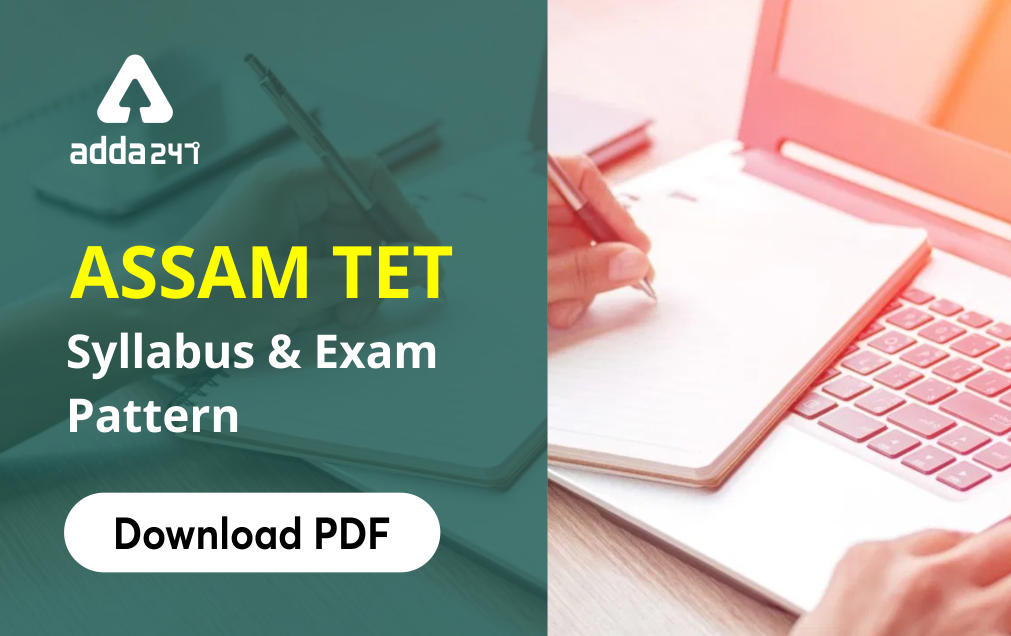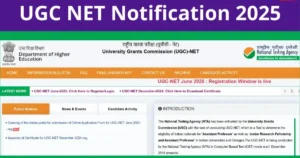Table of Contents
Assam Teacher Eligibility Test (Assam TET) 2024 will be released by the Department of Elementary Education, Assam. Assam TET has held on 2 papers i.e. Paper 1 held for Lower Primary (Classes I to V) & Paper 2 held for Upper Primary Level (Classes VI to VIII). All the candidates has started preparing for the Assam TET examination.
If want to crack any kinds of the exam you need to have complete information about that exam syllabus and exam pattern. In view of the time, we have given Assam TET Syllabus 2024 in PDF format so that you can easily download and start preparation.
Assam TET Syllabus & Exam Pattern 2024
Candidates need to check the Assam TET Exam Pattern & syllabus for Papers I & II. Here we are sharing the Assam TET Exam Pattern & weightage.
| S.No. | Paper 1 Subjects | Paper 2 Subjects |
No. of Questions
|
Marks
|
|---|---|---|---|---|
|
1
|
Child Development and Pedagogy
|
30
|
30
|
|
|
2
|
Language I (Assamese, Bengali, Hindi, Bodo, Manipuri, Garo, Nepali, Karbi, Hmar (compulsory-any one)
|
30
|
30
|
|
|
3
|
Language II (English)
|
30
|
30
|
|
|
4
|
Mathematics
|
Mathematics & Science
Or Social Studies/Social Science
|
30
|
30
|
|
5
|
Environmental Studies
|
30
|
30
|
|
|
Total
|
150
|
150
|
||
Assam TET Syllabus For Paper – I and II
To get a better knowledge of the Assam TET Exam, candidates should know the Assam TET syllabus 2024 and exam pattern properly. The detailed of syllabus , exam pattern has been given below :
Assam TET Child Development and Pedagogy Syllabus For Paper – I and II
| Topic | Paper – I | Paper – II |
| Sub – Topic | Sub – Topic | |
| Child Development |
|
|
| Process of Learning
|
|
|
| Theories of Learning |
|
|
| Pedagogy |
|
|
Assam TET Language (Hindi) Syllabus For Paper – I And II
| Paper – I | Paper – II |
| 1. हिंदी भाषा की व्युत्पति, क्रम – विकास और उपभाषाओं व बोलियों की अवधारणा।
2. हिंदी साहित्य के प्रसिद्ध साहित्यकार, जैसे – कबीरदास, सुरदास, तुलसीदास, मीराबाई, भारतेंदु हरिश्चंद्र, हपारी प्रसाद द्विवेदी, बाबू गुलाब राय, आचार्य रामचन्द्र शुक्ल, महावीर प्रसाद द्विवेदी. प्रमचंद्र दिनकर, निराला, महादेवी वर्मा, हरिशंकर परसाई, हरिऔध, आदि के बारे में सामान्य जानाकारी। 3. (क) हिंदी भाषा के वर्गों का ज्ञान। (ख) मुहावरों के बारे में जानकारी। (ग) शब्दों का परिवर्तन – संज्ञा से भाववाचक, जातिवाचक (घ) उपसर्ग और प्रत्यय का ज्ञान (ङ) लिंग, वचन, कारक और क्रिया की जानकारी। 4. (क) मातृभाषा शिक्षण के उद्दश्य और लक्ष्य की अवधारणा। (ख) भाषा के मूल कौशलों, जैसे – सुनना, बोलना, लिखना और पढ़ना के बारे में विस्तृत जानकारी प्राप्त करना। |
1. (क) हिंदी भाषा के क्रम – विकास की अवधारणा।
(ख) हिंदी की उपभाषाओं व बोलियों के बारे में सामान्य जानकारी। 2. आधुनिक हिंदी साहित्यकार प्रेमचंद, महादेवी वमी, सुमित्रानंदन पंत, रामधारी सिंह दिनकर, जयशंकर प्रसाद, माखनलाल चतुर्वेदी आदि के बारे में जानकारी। 3. हिंदी भाषा का व्याकरणिक ज्ञान: (क) संधि और समास का प्रायोगिक ज्ञान । (ख) लिंग, वचन और कारक के बारे में जानकारी। (ग) मुहावरे और लोकोक्तियों के अर्थ और वाक्य में प्रयोग। (घ) विलोम, पर्यायवाची और समानार्थक शब्दों का ज्ञान। (ङ) वर्तनी का सही ज्ञान/’र’ का विभिन्न प्रयोग। 4. (क) मातृभाषा, शिक्षण का महत्त्व। तृतीय भाषा के रूप में हिंदी की अवधारणा। (ख) सुनना, बोलना, पढ़ना और लिखना – इन कौशलों का प्रयोग क्षेत्र अनुसार अलग अलग ढंग से करना और यथासंभव उदाहरणों के साथ इन कौशलों की पुष्टि करना। |
Assam TET Language II (English) Syllabus For Paper – I And II
| Paper – I | Paper – II |
Pedagogy of language teaching
Methods – Approaches, Methods, Techniques and Strategies Grammar –
|
Pedagogy of Language Teaching –
Methods – Methods, approaches, techniques and strategies of teaching English Grammar –
|
Assam TET Mathematics Syllabus For Paper I
| Topic | Sub – Topic |
| Numbers | Natural numbers, Whole numbers, Even and Odd numbers, Prime and Composite numbers, Place value system, Four fundamental operations on numbers (Addition, Subtraction, Multiplication and Division), Factors and Multiples, Prime Factors, Lowest Common Multiples (LCM), Highest Common Factors (HCF), Skip counting, Group counting, Comparison, Ascending and Descending Order, Application of numbers in real life, Unitary method and Average. |
| Fraction | Concept of Fractions, Types of Fractions, Addition, Subtraction, Multiplication and Division of Fractions, Decimal Fractions, Percentage and their use. |
| Money | Concept of Money, Conversion of Rupee to Paisa and vice versa, Four operations in solving problems involving money, Simple problems involving Profit and Loss. |
| Geometry and Mensuration | Concept and understanding of different shapes, Line, Line Segment, Ray, Angles, Types of Angles, Types of Triangles, Types of Quadrilaterals, Circles. Length, Perimeter and Area of different Geometrical figures, Weight, Time, Capacity and Volume. |
| Data Handling | Introduction to Data, Representation of Data, Pictograph, Bar Diagram, Pie chart and Draw Inferences |
| Intergration of ICT in teaching Mathematics | Importance of ICT in teaching Mathematics. Use of ICT in teaching Mathematics. |
Assam TET Environmental Studies Syllabus
| Topic | Sub – Topic |
| Children Environment (Near and far) |
|
| Environment and Child’s need |
|
| Care and Protection of Environment |
|
| Pedagogy |
|
| Intergration of ICT in teaching Environmental Science |
|
Mathematics: For Paper – II
| Topic | Sub – Topic |
| Number System | Natural numbers, Test of divisibility, Whole numbers, Negative numbers and Integers, Rational numbers, Irrational numbers, Fractions, Decimal fractions, LCM and HCF of rational numbers, Comparisons and operations of rational numbers, properties of numbers, Square, Square roots, cube, cube roots, powers and exponents, Laws of Exponents. |
| Socially applicable Mathematics | Ratio and Proportion, Simple and Compound Interest, use of unitary method, Discount, Profit and Loss. |
| Algebra | Preliminary concept of Algebra, Algebraic expressions and their types, Operations on algebraic expressions, Factorization on algebraic expressions Linear equations in one variable, Linear equations in two variables, Linear inequalities, Algebraic solutions of linear inequalities of one variable, Algebraic method of solutions of pair of Linear Equations. |
| Geometry and Mensuration | Lines and angles, Pairs of angles, Properties of Triangles, Quadrilaterals and polygons, congruency of triangles, Area of triangle, Pythagoras Theorem, Perimeter and Area of different geometrical figures, Idea of Pie, Surface area and volume of Cube, Cuboid, Cone, Cylinder and Sphere, Surface area and volume of Combination of solids. |
| Introduction to Graphs and Data Handling | Axes, Cartesian plane, co – ordinate of points, plotting of points in different situations, distance between two points, reading and drawing of linear graphs, Collection and organization of data, classification of data, class interval, frequency of a class, frequency distribution table, introduction of graphs, Bar and Pie graphs, reading Bar graphs, interpretation of data from graphs, Measures of Central Tendency. |
| Intergration of ICT in teaching Mathematics | Importance of ICT in teaching Mathematics. Use of ICT in teaching Mathematics. |
SCIENCE For Paper – II [Physics, Chemistry and Biology]
| Topic | Sub – Topic |
| Physics |
|
| Chemistry Total Marks – 9 |
|
| Biology | Living World:
Plant World: –
Animal World: –
|
| Intergration of ICT in teaching Science |
|
Social Science For Paper – II
| Topic | Sub – Topic |
| Geography |
|
| History |
History of Assam:
|
| Economics |
|
| Political Science |
|
| Integration of ICT in Teaching Social Science |
|
Assam TET Syllabus PDF
Candidates should know about the Assam TET topic-wise weightage before starting to prepare. Read below to know what you need to prepare and how you can strategize your preparations for the Assam TET 2024 exam.
To make your exam easy and simple we have given New Assam TET Syllabus Paper I & II PDF. Candidates appearing for classes 1st to 5th should prepare with Assam TET paper 1 syllabus whereas candidates aspiring to teach classes 6th to 8th should prepare with Assam TET paper 2 syllabi
| Assam TET Syllabus PDF | |
| Download Assam TET 2024 Syllabus PDF for Paper 1 | Download Assam TET 2024 Syllabus PDF for Paper 2 |



 UGC NET Notification 2025 Out, Exam Date...
UGC NET Notification 2025 Out, Exam Date...
 Last Minute Preparation Tips for MP TET ...
Last Minute Preparation Tips for MP TET ...
 GAT B Cut Off 2025, Check Expected, Cate...
GAT B Cut Off 2025, Check Expected, Cate...














